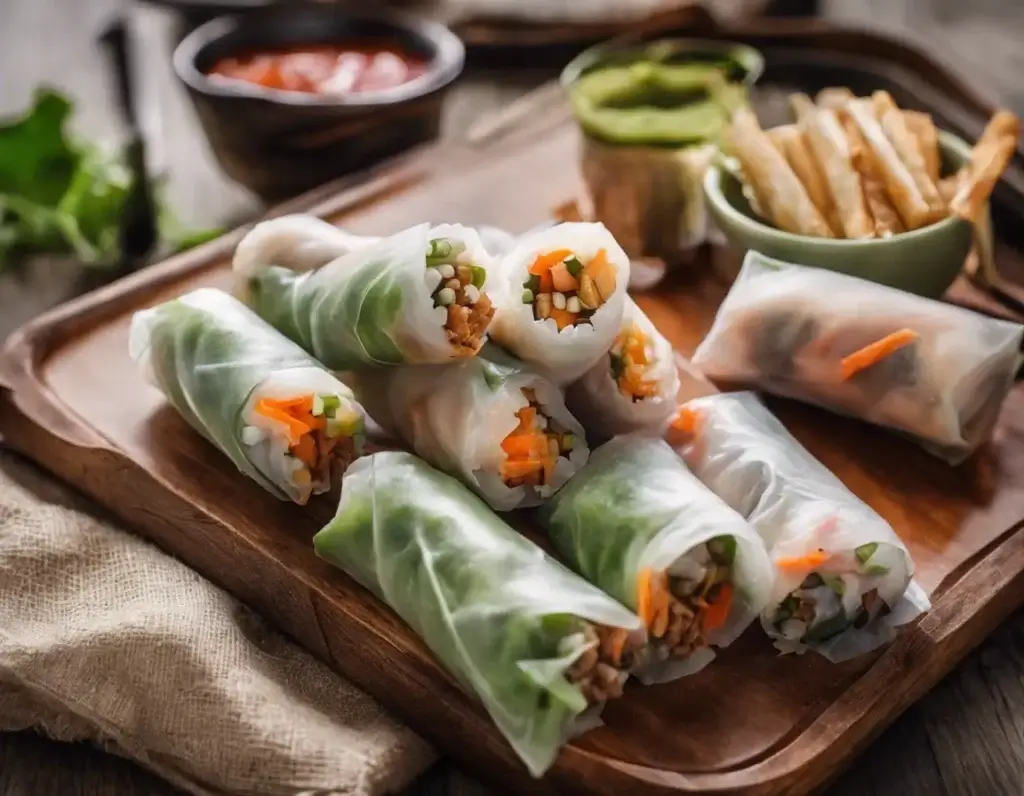It’s the showdown you’ve all been waiting for: spring roll vs. egg roll. What makes them different? Which one is better, really? Dive into this delicious listicle to unravel these rolls’ tasty mysteries.
Wrap It Up

When it comes to the egg roll vs. spring roll debate, one of the key differences lies in the wrappers. Spring rolls’ wrappers are thin, almost translucent.
This contrasts with the egg roll’s thicker dough. It results in a much chewier texture than spring rolls, perfect for those who love a hearty bite.
In the culinary showdown of egg roll vs. spring roll, it’s not just about the filling. Spring rolls’ thinner wrappers absorb less oil when fried, making them lighter.
Filling Facts

When it comes to the debate of egg roll vs. spring roll, the inside is what counts. Egg rolls tend to pack a heartier punch.
Still, while they’re packed more tightly, egg rolls can be filled with anything. There’s vegetable egg rolls, pork egg rolls, heck, even cheeseburger egg rolls.
Spring rolls offer a lighter fare, often brimming with crisp vegetables or sometimes shrimp. This makes them ideal for those seeking a less filling option.
Cooking 101

Ever find yourself at a dim sum brunch, puzzled over the menu? You’re not alone! The egg roll vs. spring roll debate is one for the ages.
When it comes to cooking, egg rolls and spring rolls call for different preparation methods. Egg rolls, for example, are deep-fried to achieve that golden perfection.
Spring rolls, however, offer a delightful contrast. Depending on the variety, they might be fried to a crisp or served fresh. This versatility make them stand out.
Crispy vs. Fresh

The deep frying of egg rolls wraps them in a crispy embrace, offering a satisfying crunch with every bite. It’s the kind of snack that makes noise.
If you’re leaning towards a lighter, fresher bite, spring rolls are your go-to. With their often soft, sometimes translucent wrappers, they’re the egg roll’s gentle cousins.
The contrast between egg roll vs. spring roll doesn’t end at their wrappers. It extends to their fillings and overall aesthetic, making each roll uniquely appealing.
Origin Story
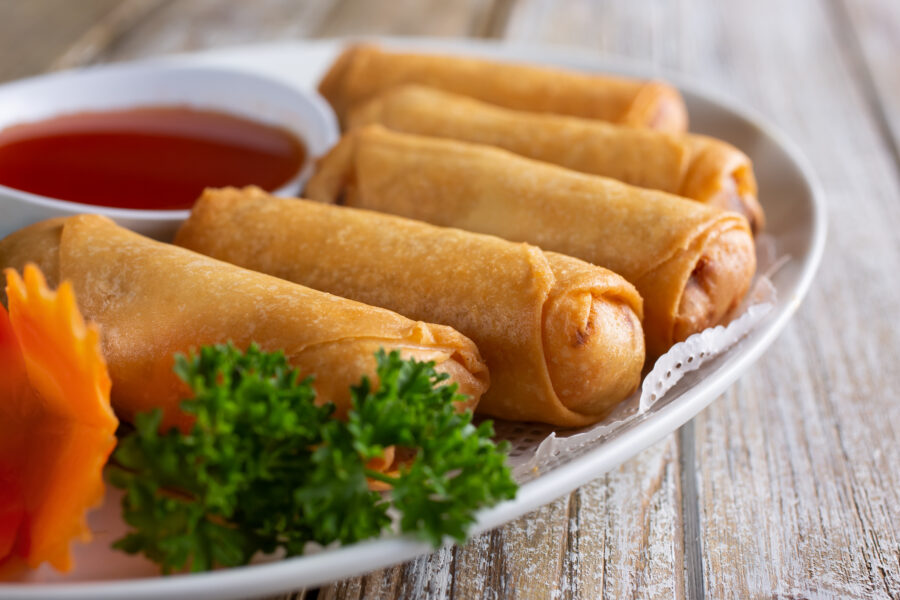
Like most culinary creations, the egg roll’s exact origin is unclear. However, it is a Chinese-American staple, so its lineage can be traced back to Chinese immigrants.
Spring rolls also have roots in China, but they’re pretty widespread throughout much of East and Southeast Asia. Countries like Vietnam and Japan have their own versions, too.
Either way, both foods are staples of the Asian continent. We’ll dive deeper into their cultural significances later on in this article, so sit tight.
Size Matters

When it comes to the epicurean showdown of egg roll vs. spring roll, size plays a starring role. Egg rolls proudly boast a heftier form.
Spring rolls are the daintier contenders in this fight. These lighter rolls are often served as appetizers, perfect for kicking off a meal without overshadowing the main course.
The size difference isn’t just about portion control; it’s a reflection of their distinct roles. While egg rolls can stand solo, spring rolls set the stage.
Veggie Variety

When pondering the egg roll vs. spring roll debate, we admire the spring roll’s veggie variety. Carrots, lettuce, and bean sprouts bring a crispy, refreshing twist.
Spring rolls make us feel a tad healthier with their vibrant veggie contents. Egg rolls…not so much. They’re definitely good, but their veggies aren’t as fresh.
In the culinary showdown of egg roll vs. spring roll, the latter surely wins the ‘freshness’ category. They offer a lighter, more garden-fresh experience.
Meat or Not

Egg rolls often welcome a hearty mix of meat and veggies. Spring rolls, however, are usually for veggie-lovers. The difference seems clear cut, doesn’t it?
But here’s the catch: not all egg rolls are meat-packed, and not all spring rolls are strictly vegetarian. Chefs worldwide love to blur traditional lines.
At the end of the day, whether or not the filling contains meat is up to the chef (or you!). Egg rolls do allow for more meat, though.
Sauce Scene

When it comes to egg rolls vs. spring rolls, don’t forget to consider the sauces! If you’re going to make these rolls, you’ll need the right sauces.
Spring rolls are typically accompanied by a light, tangy sauce that complements their delicate flavors. Egg rolls, with heartier fillings, usually call for robust sauces, like duck sauce.
You don’t necessarily need sauces; it’s all up to you. If you don’t know where to start, though, go for soy sauce. It goes well with both.
Texture Talk

When biting into a spring roll, the texture is the first thing you’ll notice. Unlike an egg roll’s uniform crunch, spring rolls offer a pleasantly chewy wrapper.
This is because they’re often wrapped in rice paper or thin wheat flour wrappers. These wrappers are specially designed to crisp up when fried.
Egg rolls, however, boast a hearty, crispy shell. They’re almost always eaten fried, and never really have a chewy or tender texture, unlike spring rolls.
Flavor Fusion
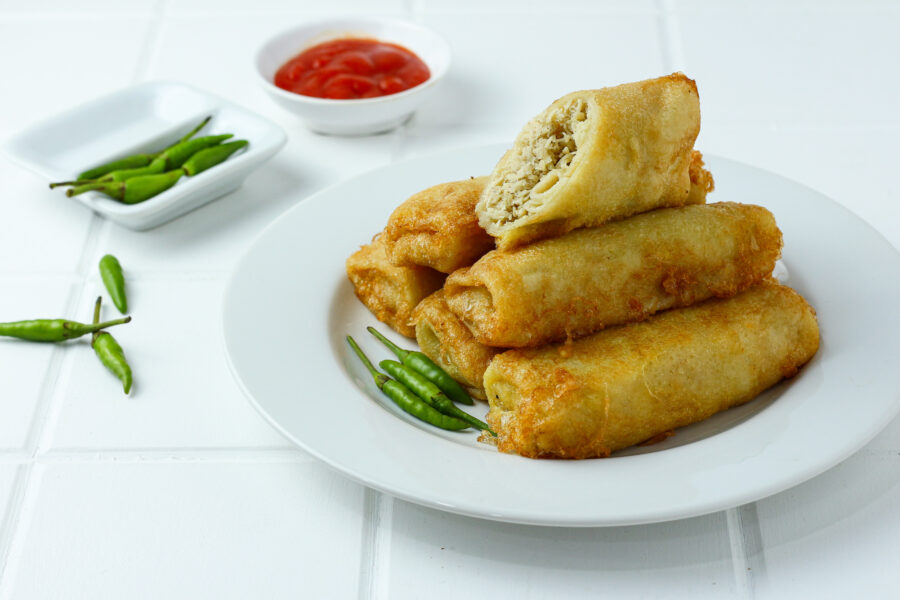
This flavor fusion is a full sensory experience. Spring rolls offer a light, refreshing bite, while egg rolls serve up a satisfying crunch for a hearty appetites.
With spring rolls, it’s crucial to appreciate the art of balance. There’s a delicate balance of fresh veggies (and sometimes shrimp), wrapped in a translucent, delicate rice paper.
Egg rolls bring a hearty punch of flavor, often filled with a mix of meat and cabbage. They’re encased in a thicker, wheat-based wrapper, and can taste saltier.
Herb Heaven

When diving into the egg roll vs. spring roll debate, spring rolls’ fresh herbs steal the show. They’re pivotal, infusing every bite with vibrant, fresh flavors.
Imagine biting into a spring roll, where the crispness of fresh herbs meets the softness of rice paper. This is where the distinction really shines.
Herbs play the role of unsung heroes in spring rolls. They add a layer of complexity and freshness that egg rolls, for all their taste, don’t have.
Cultural Cuisine

Ever wondered about the egg roll vs. spring roll debate? It’s not just about the filling or the wrap, but a deep dive into culinary history.
Spring rolls are a celebration of Asian diversity, from Vietnam’s fresh, herb-filled delights to China’s heartier versions. In Japan, they’re served with mustard.
The egg roll, though, is a perfect example of Chinese-American ingenuity. Wrapped in wheat dough that puffs up when fried, it’s a crunchy bite that’s become a staple.
Rolling Techniques

When it comes to rolling, it’s all about technique. Spring rolls ask for a gentler touch, their delicate wrappers prone to tears if handled too roughly.
Egg roll wrappers are much more forgiving. They allow for a bit more pressure and less precision, making them perfect for beginners or those less concerned with perfection.
Regardless of whether you’re team egg roll or spring roll, mastering the roll is part of the fun. Each has its quirks, but both result in deliciousness.
Serving Style

Spring rolls are often served cool, a refreshing choice for a summer appetizer or a light, breezy lunch option. Egg rolls are usually served warm.
The contrast in serving temperature between egg rolls and spring rolls is not just a matter of taste but also tradition. Spring rolls’ freshness complements hot climates.
Egg rolls, while warm, aren’t overwhelmingly hot. They can also be served at room temperature. They might for a great side dish to a filling meal.
Internationally Inspired

Spring rolls and egg rolls have completely conquered the globe. No matter where you go, there they are. Don’t look behind you. It will be okay.
Globetrotting through the world of rolls, you’ll stumble upon all kinds of spring rolls. Cambodian rolls, for example, are particularly known for their freshness.
Not to be outdone, the fried Chinese versions of spring rolls are a crunchy delight. They’re filled with a savory mix of cabbage, carrots, and sometimes meat.
Grease Factor

It’s impossible not to touch on the grease factor. Egg rolls owe their irresistible texture to deep-frying, which, while delicious, ups the grease content.
On the flip side, spring rolls present a lighter fare. This makes them a go-to for those craving the crunch without the grease-heavy finish associated with egg rolls.
The cooking method is crucial. While egg rolls take a dive in hot oil, spring rolls might be served fresh or lightly pan-fried, offering a less greasy experience.
Health Angle

Okay, so spring rolls and egg rolls are equally delicious. But what about health? Spring rolls are the go-to for guilt-free munching, packed with veggies and lean meats.
Spring rolls usually aren’t fried, making them a fantastic choice for those keeping an eye on their calorie intake. Plus, that fresh crunch in every bite? Absolutely unbeatable.
Choosing between an egg roll vs. spring roll can be pivotal in your diet. Spring rolls offer a refreshing twist with their raw, vibrant fillings.
Wrap Color

That golden-brown hue of egg rolls comes from their deep-frying process. It gives them a crispy, inviting appearance that’s hard to resist.
On the flip side, spring rolls have a more subtle charm. Their wraps, especially when uncooked, boast a lighter color, reflecting the freshness of the ingredients inside.
The color contrast in the egg roll vs. spring roll showdown isn’t just about looks. It signifies the flavor and texture experience waiting with each bite.
Global Love

When it comes to the great debate of egg roll vs. spring roll, it’s not just about choosing sides. It’s about celebrating a global love affair.
It’s a journey from the bustling streets of Asia to the heart of culinary scenes around the world. This signifies both rolls’ universal appeal.
In the grand scheme of things, this debate is more than just a matter of preference. It shows how food can bring people together.
Understanding the Wrappers
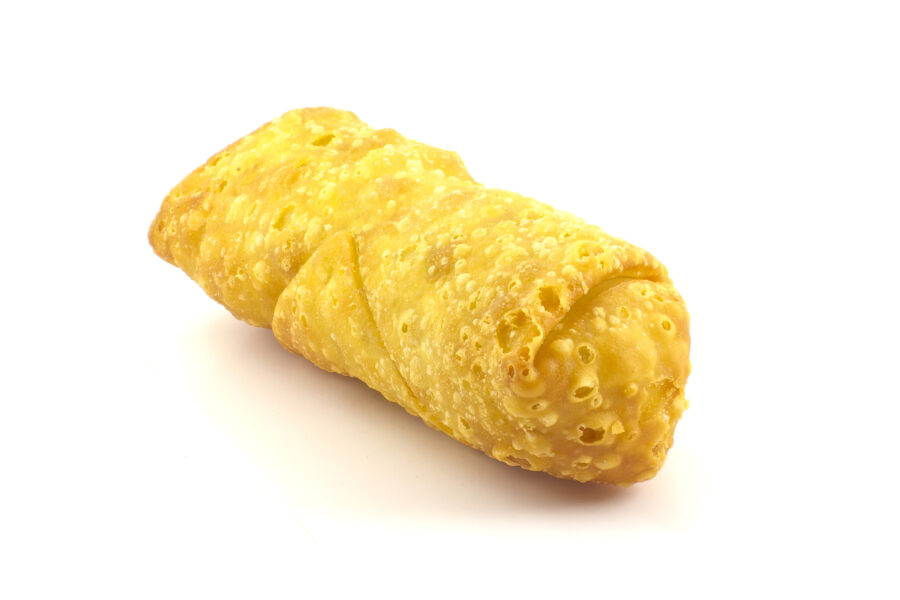
The difference in wrappers between spring rolls vs. egg rolls is huge. It’s one of the biggest defining characteristics between the two foods.
As we’ve said, egg rolls have much thicker wrappers, made of wheat flour. They’re actually easy to make at home, using pantry staples like eggs and corn starch.
Spring roll wrappers vary a lot across countries. You’re probably most familiar with the Vietnamese and Thai versions. Those are made from rice flour and water.
Best Occasions for Serving
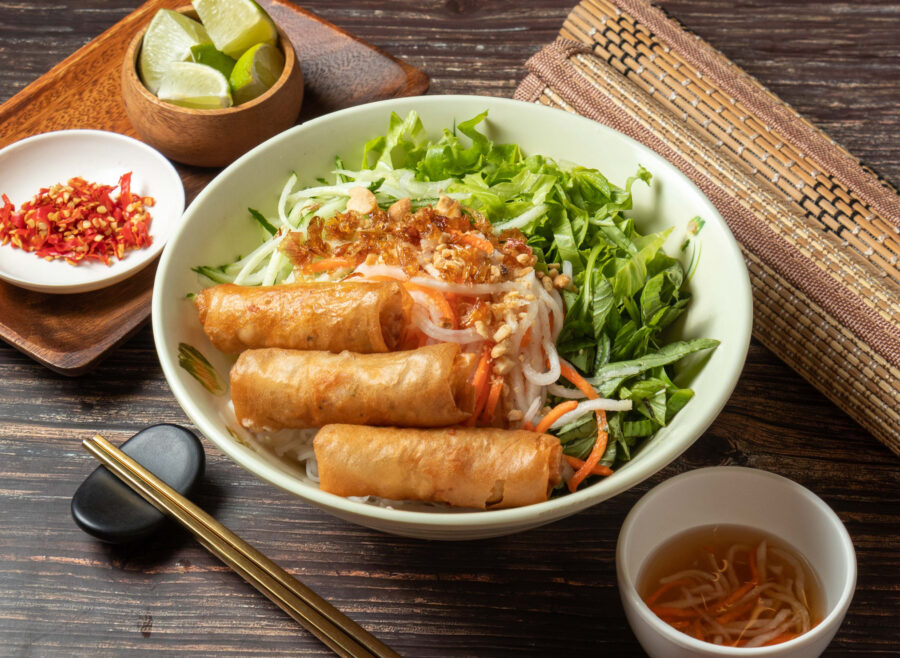
Maybe you’re biding your time when it comes to serving spring rolls and egg rolls of your own. Honestly, though, we don’t think you need to.
It’s always a good occasion to serve egg or spring rolls! However, since spring rolls are a bit lighter, you might find them better suited for appetizers.
Egg rolls can also be served as appetizers, though their heartier content might make them better as a side dish. Whatever you decide, we support you.
Gluten-Free Options
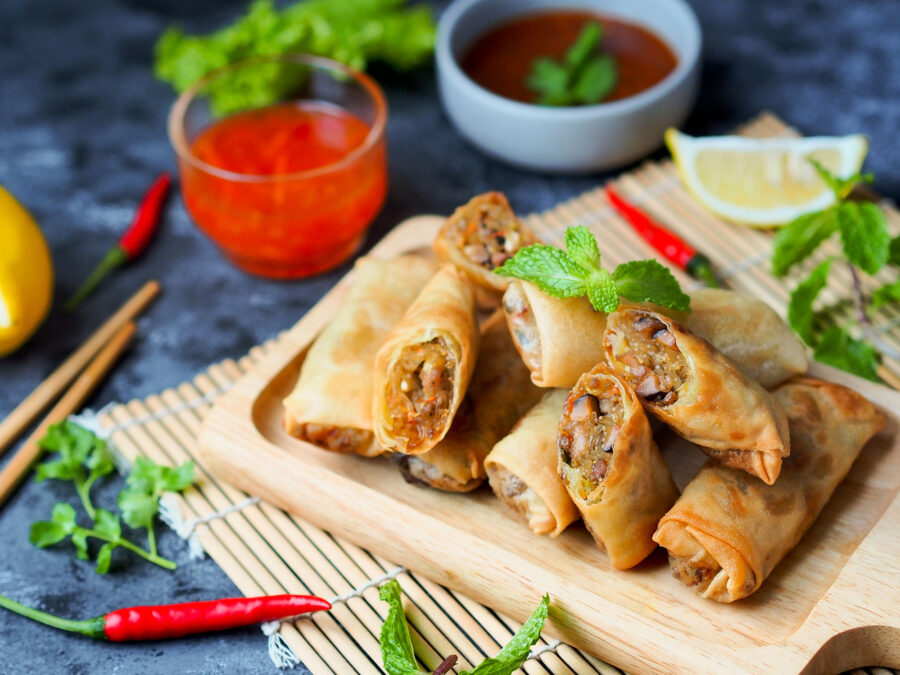
Whether or not your egg rolls are gluten-free is up to where you buy them from. Generally, though, they contain gluten, because of the wheat flour.
Spring rolls are a different story. If they’re made with rice flour, then good news — there’s no gluten in them! Again, though, it depends on the restaurant.
The only surefire way to ensure that your rolls are gluten-free is to make them yourself. Stores sometimes sell gluten-free wrappers, so keep your eyes peeled.
Nutritional Content
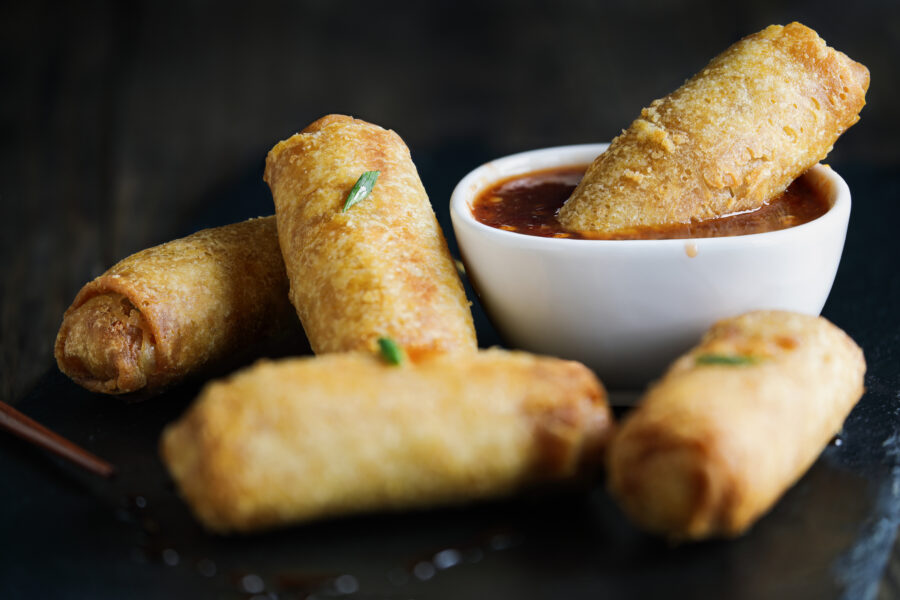
If your rolls are fried, no matter if they’re spring or egg, they’re a little more unhealthy. That’s fine. They taste good. You’re fine.
If you’re trying to be health-conscious, though, then fresh spring rolls are your best bet. You can add some meat if you want protein.
Let’s look at the numbers. According to Healthline, your average egg roll has 417 milligrams of sodium. They’ve also got over seven grams of protein.
Wine Pairings

Maybe you don’t think about wine pairings when it comes to spring and egg rolls, but why not? These rolls’ different flavors go well with different wines.
Refreshing spring rolls go well with a nice, light roses and white wines. While egg rolls are heavier, they’re not heavy enough to go with a complex red.
Basically, if you’re a white wine lover, you’ll have a field day with egg and spring roll wine pairings. Sauvignon blanc and riesling are common choices.
Storing Leftovers
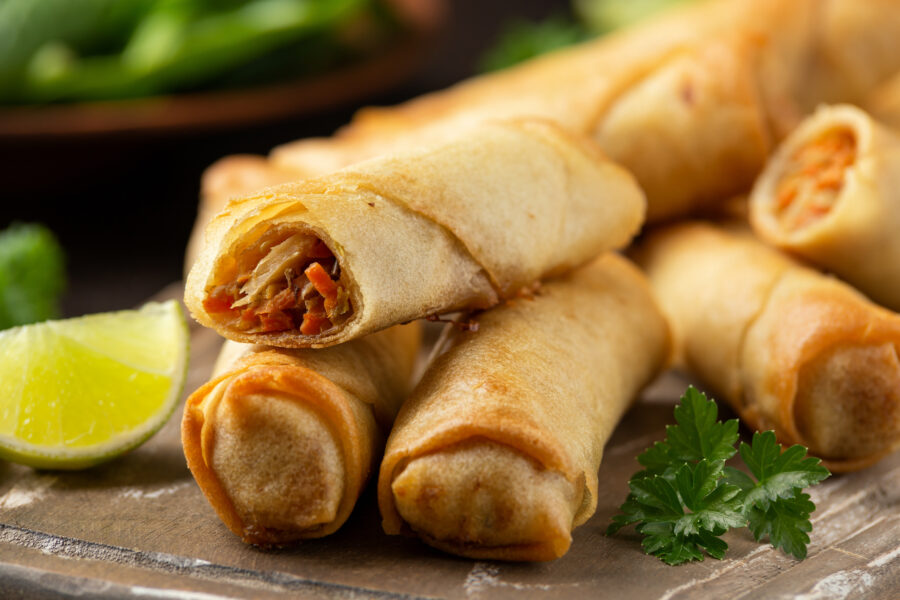
Now that we’ve covered most of the differences between spring and egg rolls, how do you store them? Good rule of thumb — put them in the fridge.
If they’re fried, you don’t want to leave them in there for too long, though. They’ll lose their crispiness pretty quickly, usually after a few days.
Even though fresh spring rolls don’t have that same issue, they typically have the same shelf life. Basically, it’s always best to eat them fresh.
Cultural Significance: Spring Rolls
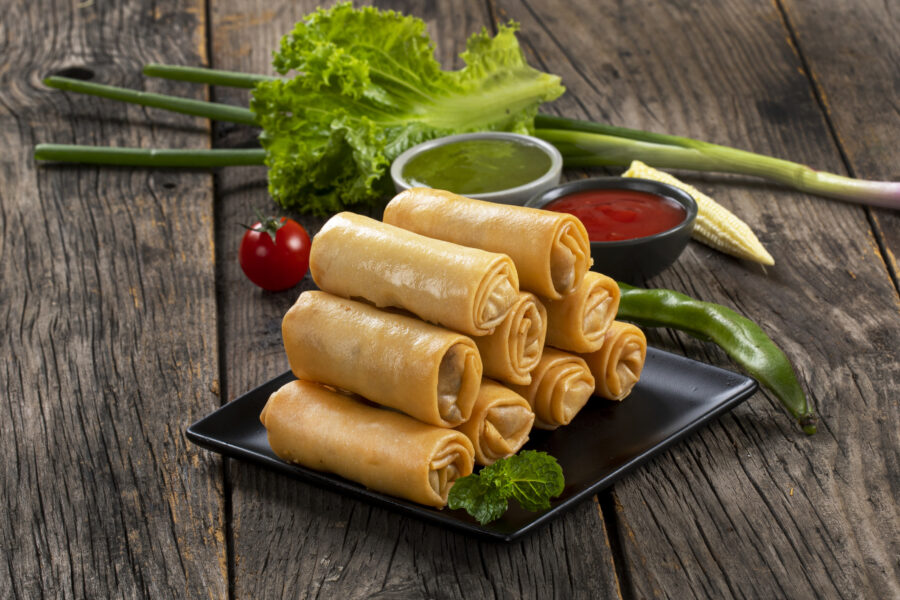
There’s no denying that this food is important. As spring rolls are widespread across multiple Asian cultures, though, their specific significance varies from nation to nation.
In Vietnam, they helped people stay cool, especially during the summer months. Throughout Asia, they’re usually regarded as a spring and summer food, since they’re so light.
Nowadays, you’ll find spring rolls in every corner of the world. You can eat them at any point of the year (though they really shine during the summer).
Cultural Significance: Egg Rolls
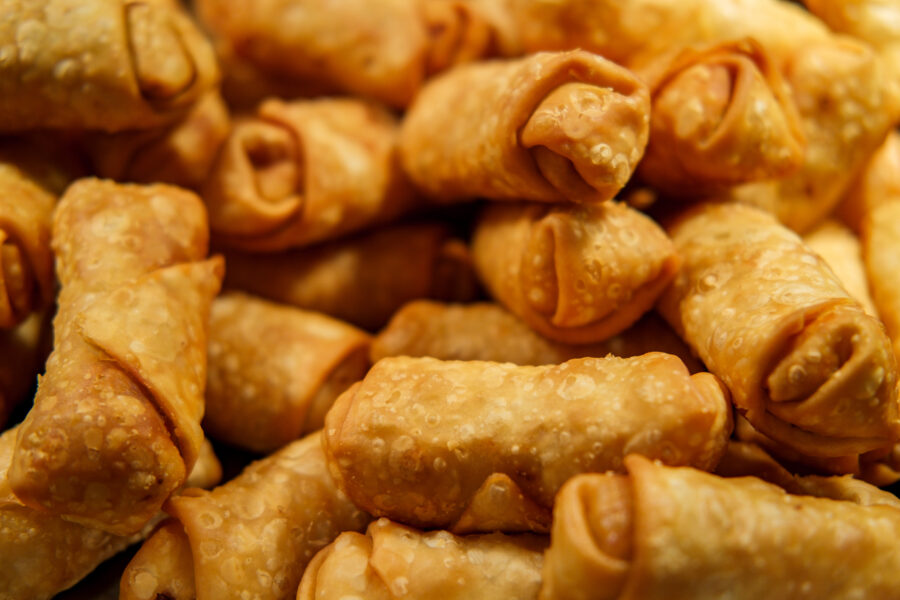
As we mentioned earlier, egg rolls are a big feature of Chinese-American cuisine. Originating from spring rolls, they were adapted in the U.S. to cater to local preferences.
Egg rolls have since become a symbol of Chinese-American identity. They served as a familiar entry point for Americans into the world of Chinese cuisine.
Furthermore, egg rolls are a testament to the creativity and innovation of Chinese-American chefs. These chefs created a dish that is uniquely American yet retains its Chinese origins.
Spring Roll and Egg Roll Fusions
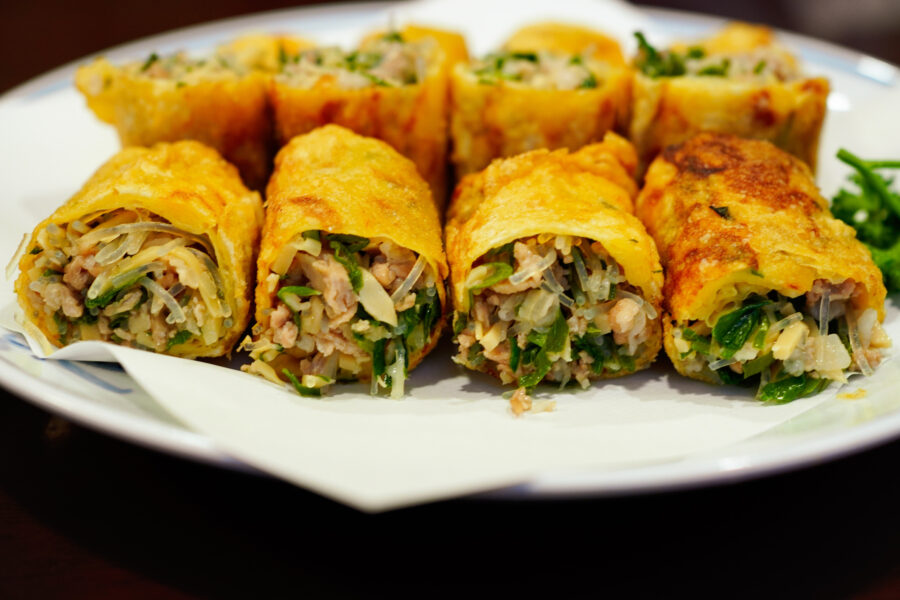
To fuse these two rolls together, incorporate Vietnamese fresh spring roll ingredients into the more substantial, fried wrapper of an egg roll. This’ll give it a fresh twist!
Another fusion approach is the “deconstructed egg roll.” The contents of a traditional egg roll are served over a bed of lettuce, alongside spring roll ingredients like mint.
Chefs have also experimented with reverse fusion. This might include serving traditionally cooked egg roll fillings — such as seasoned pork and vegetables — inside spring roll wrappers.
Debunking Common Myths
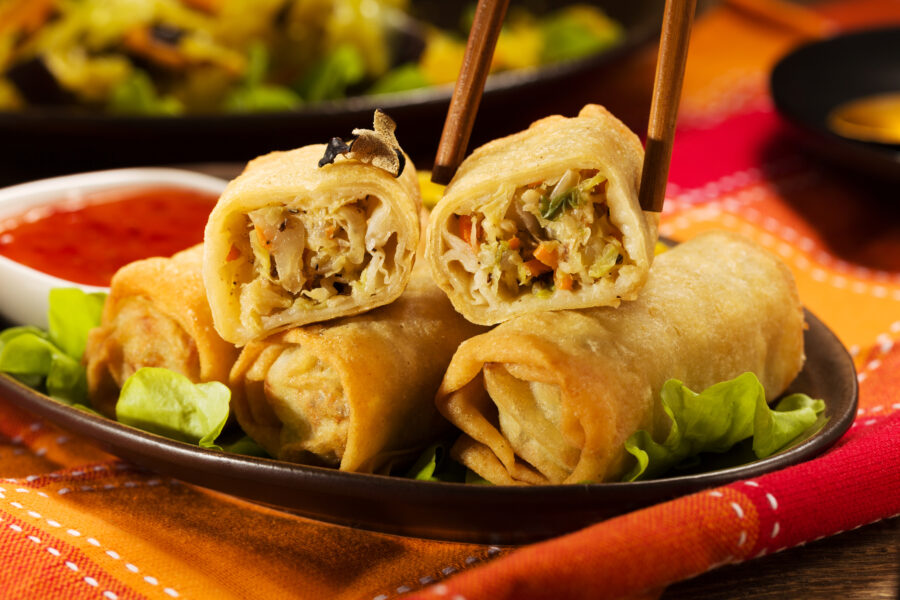
No, egg rolls and spring rolls aren’t the same. Like, at all. Egg rolls are Chinese-American, while spring rolls are closely associated with the Asian continent.
Also, spring rolls aren’t necessarily healthier. Sure, the fresh version is, but the fried version can be just as indulgent as your average egg roll.
Egg rolls don’t contain egg. No, not even the wrapper. There’s usually no eggs involved in the process at all. Sorry to break it to you.
Conclusion
And there you have it, a flavorful journey through the key differences between egg rolls and spring rolls. From their wrapping to their fillings and even their cultural origins, it’s clear that while they may share some similarities, each brings its own unique taste and texture to the table. Whether you’re a fan of the crispy, hearty egg roll or the light, fresh spring roll, there’s no denying the delicious diversity they add to any culinary experience. So next time you’re pondering over egg roll vs. spring roll, remember, why not enjoy both and celebrate the rich tapestry of flavors they offer? If you want more fun foodie content, check out our blog!
Questions & Answers:
Question: What is the main difference between egg rolls and spring rolls?
Answer: The main difference lies in the wrappers and fillings. Egg rolls have thicker, doughy wrappers and are typically filled with meat and cabbage, making them hearty. Spring rolls have thin, often translucent wrappers with lighter fillings like vegetables or shrimp, making them a fresher option.
Question: Are spring rolls healthier than egg rolls?
Answer: Yes, generally spring rolls are considered healthier than egg rolls because they have thinner wrappers that absorb less oil when fried, and they often contain fresher, lighter fillings.
Question: Can egg rolls be part of a vegetarian diet?
Answer: While traditionally filled with meat, egg rolls can be adapted to fit a vegetarian diet by using a mix of vegetables instead of meat.

